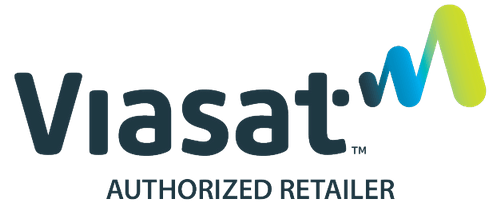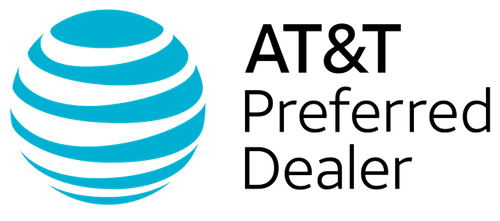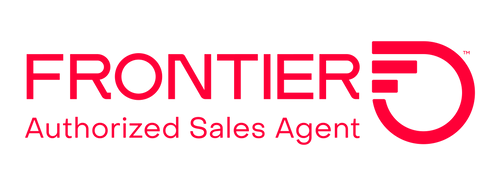There may be no such thing as a free lunch… but free internet? That might just be possible. Yes, free internet at home exists.
And that matters as being connected is more essential than ever. It’s used for everything from work and school to healthcare and banking. Most importantly, it helps us connect with loved ones both near and far.
Unfortunately, the high cost of service keeps many families offline. In fact, millions of Americans either can’t afford home internet or live in areas where reliable broadband simply doesn’t exist. This problem disproportionally affects low-income households, seniors, and people living in rural and remote areas, including Indigenous communities.
Obviously, internet access isn’t just for entertainment (i.e., scrolling through socials). Without it:
- Students can fall behind, especially if they can’t complete assignments, attend classes, or use tutors online.
- Job seekers may miss key opportunities if they can’t fill out applications or attend interviews online.
- Patients skip care if telehealth isn’t available, especially in areas where medical centers are closing.
- Families are left out of government programs, community events, and public safety alerts that are now shared online.
- Communities miss out on growth when businesses, remote workers, and entrepreneurs avoid areas without good internet.
This digital divide became strikingly apparent during the COVID-19 pandemic when students sat for hours in fast-food or coffee shop parking lots to access Wi-Fi, and families missed out on remote healthcare or work opportunities due to a lack of reliable connection (especially if multiple family members needed to be online).
Fortunately, this situation illuminated just how important access really is. And government leaders, nonprofit organizations, and private companies joined together to help expand not only access but also affordability. Especially in underserved rural or low-income communities.
While not everyone can get internet for free, there are more options than ever before to get online without blowing your budget. Here’s how to get free internet at home.
Public and Private Partnerships Providing Connections
Expanding internet access is a big job. One that’s likely too big for almost any one group to do alone. That’s where public-private partnerships come in. These collaborations bring together government support, nonprofit initiatives, and/or internet service providers (ISPs) to reach more people.
By partnering with government and nonprofits, many ISPs have been able to offer discounted or even free internet service for qualifying households. These programs often get help from government funding or are part of a company’s efforts to give back. For just a few examples:
- Comcast/Xfinity Internet Essentials offers internet for as low as $14.95/month for eligible families. There’s also an option to purchase a low-cost computer.
- AT&T Access offers plans starting at $0 with federal support for households on SNAP or SSI.
- Spectrum Internet Assist gives affordable options for families with students or seniors who get public assistance.
- EveryoneOn is a nonprofit that helps match users with low-cost internet plans and devices based on ZIP code and eligibility.
In addition, some communities have partnered with local nonprofits or tech organizations to create shared hubs, extend public networks, or even distribute devices (think mobile hotspots) to families in need. Libraries, schools, and housing authorities are often used in these efforts.
Even when not entirely free, these programs can drastically reduce costs, especially when layered with other government support like the Affordable Connectivity program.
Government Initiatives
Internet access is a modern necessity, and local, state, and federal governments now recognize this. In turn, they’ve introduced a range of programs to expand coverage as well as make it more affordable. These initiatives are designed to bridge the growing digital divide for those who might otherwise be left offline.
U.S. Federal Programs
Launched in the wake of the COVID-19 pandemic, the Affordable Connectivity Program or ACP provided a discount of up to $30/month for eligible households toward their internet services, though many ISPs applied this credit directly to bills. However, as of June 1, 2024, this program is no longer available.
One of the longest-running federal communications subsidies is called Lifeline. This program helps pay up to $9.25 per month for broadband, phone, or bundled services for qualifying low-income households. Plus, it can be used with ACP in many instances to help make communication more affordable.
State and Local Efforts
There is only so much the federal government can do. That’s why many states, counties, and cities are stepping up to both identify and address access gaps. Some examples include:
- Municipal Broadband Networks: Over 800 municipal networks across the nation are now in operation. From Tacoma, Washington, to Loveland, Colorado, to Winter Haven, Florida, you can find publicly owned internet services that are fast, affordable, and reliable.
- State Broadband Offices: Many states now have dedicated teams tasked with allocating infrastructure grants, expanding service maps, and coordinating with local providers.
- County and Regional Co-Ops: In rural areas, electric or telecom co-ops have been building out networks to serve residents left behind by larger providers for years.
Many of these efforts have been supported by federal infrastructure funding, such as the Broadband Equity, Access, and Deployment (BEAD) program, which is delivering billions to states to improve internet availability.
More broadly, the current push for universal broadband access reflects a growing recognition that internet service is essential, much like water or electricity. States and local governments are leading the charge to ensure even harder-to-reach communities are not left offline. In many cases, they’re identifying coverage gaps, considering partnerships with nonprofit and private providers, and creating long-term strategies to bring affordable, high-speed internet to every household.
How to Get Free Internet at Home: Alternative Options
What if you don’t qualify for a government program or low-cost plan, but you are still getting financially squeezed and need to decrease costs? (Who doesn’t?!) There are still a few creative yet practical ways to get coverage without busting your budget. Some are, yes, even free.
1. Public Wi-Fi Hotspots: Many public spaces offer free Wi-Fi you can use when you’re home or away—as long as you’re within range. Libraries, schools, community centers, fast-food restaurants, coffee shops, and more often broadcast their Wi-Fi signals far enough so nearby homes can tap in.
Tip: If this is your plan, be sure to use a VPN and avoid sharing sensitive information.
2. Community Wi-Fi Programs: Some cities and nonprofits have launched neighborhood Wi-Fi mesh networks or community internet projects that offer free or shared access. These may include free Wi-Fi zones in parks or neighborhoods, shared internet through housing authorities, and nonprofit-run hubs or mobile units in underserved areas. Check your local city or county website, library, or school district to see if any of these programs are near you.
3. Mobile Hotspot Devices: Some libraries and other organizations or institutions loan out mobile hotspot devices you can use at home. These connect to a cell signal and create a Wi-Fi network for your household. You can borrow them for free—just like books—but be aware that data limits may still apply.
4. Tethering from Your Phone: If your phone plan allows it, you may be able to use your smartphone as a hotspot to connect other devices. Just be aware of data limits. Some carriers throttle or charge extra after you’ve reached a set threshold.
Yes, Free (or at Least Low-Cost) Internet at Home Is Possible
Free internet at home may not be available to everyone (yet). But there are more options now than ever before—you just need to know where to look. Thanks to a growing network of partnerships, government subsidies, and community programs, many families are able to get connected at little to no cost.
Start by checking out local and national programs. With a little persistence, you might just find yourself logging in for free—or close to it!











